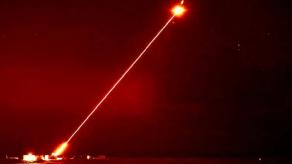Shortly after the event, several Western publications, in particular the Financial Times and Politico, with reference to their own sources, reported that modified Tu-141 Strizh UAVs were used for long-range strikes on the Engels and Dyaghilev airfields that resulted into at least one Tu-95 destruction.
This confirms Defense Express assumption that it was the Soviet UAV used for the strikes. But it should be noted that Kyiv did not officially announce that this strike was inflicted by the Armed Forces of Ukraine in general. The similar approach was taken after the attacks by marine kamikaze drones on the ships of the Black Sea Fleet of the russian federation in temporarily occupied Sevastopil. The same with russia’s airfields in temporarily occupied Crimea, which was officially confirmed only a month later.
Read more: Russians Patrol the Crimean Sky With the Su-27SM Fighters
Overall, the Tu-141 Strizh conversion is the best that could have been done with this rather archaic UAV from the 1970s. Clumsy outdated reconnaissance equipment, including the camera film, which was thrown away that made it possible to release about 100 kg of payload. At the same time, this drone already had all the possibilities for its transformation into a cruise missile: inertial navigation system, the ability to fly at ultra-low altitude and program the route, high speed (up to 1100 km/h) and a long flight range of up to 1000 km.
In addition, most likely, a block with satellite navigation was added to the Strizh navigation equipment, which is possibly indicated by the high accuracy of strike that was enough to destroy a single aircraft. That is, Ukrainian engineers turned a completely helpless drone, which is more than half a century old, into a means of long-range damage.

What kind of such titanic work was done on this development will be revealed after the victory of Ukraine. And the Strizh conversion definitely brought Ukraine one step closer. After this the maximum zone of destruction of own territory for the russian federation has changed from 120 km (the range of Tochka-U) to 1000 km. The difference is easier to see on the map:

If earlier in the Kremlin they realized that the maximum possibilities of remote warfare of Ukraine are in the border areas, now Ukraine’s possibilities in the entire European region of the russian federation up to St. Petersburg.
At first glance, not much has changed for russia, because military facilities on this territory are already within the range of NATO long-range missiles. And the main thing is that the entire rusia’s anti-aircraft defense, as a system, is built to repel such an attack not from the south, but from the north and west.
That is, a completely logical step for the Kremlin is to rebuild its air defense in such a way as to protect its facilities from a new threat. And this is a rather complex task, which involves the relocation of existing air defense systems and the organization of air patrols or "duty pairs" to intercept cruise missiles.
And this means for the russian federation only a shuffling of the already available resources, a reduction in the number of air defense systems in the front-line areas, a withdrawal of a certain part of the fighter aircraft, which ultimately contributes to a decrease in the density of aviation and air defense on the front line. That is, the very possibility of such long-range strikes by the Armed Forces of Ukraine already has a global effect on the entire course of the war.
Read more: The UK Defense Intelligence Estimates That Russia Has Likely Received Iranian Kamikaze Drones’ Resupply














